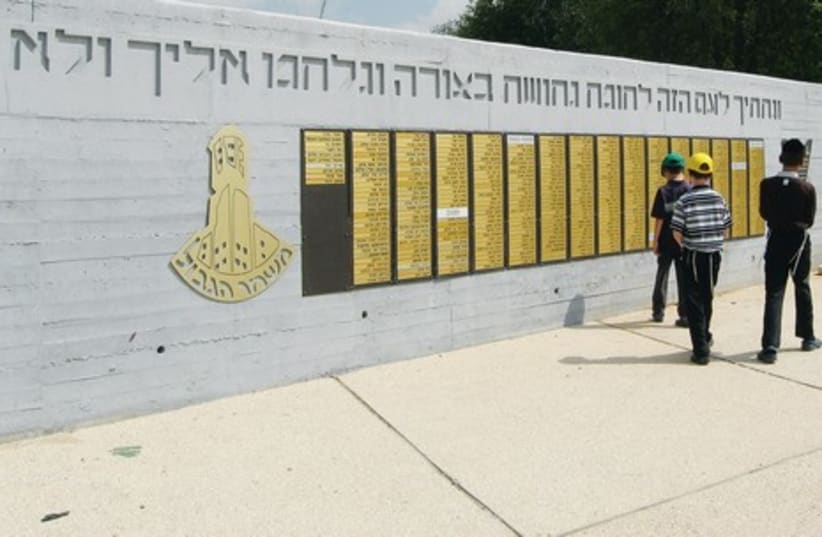4. THE ISRAELI MUSEUM OF CARICATURE AND COMICS – Holon The Israeli Museum of Caricature and Comics, situated at 61 Weizmann Street, is one of the few museums in the world dedicated to this art.Just walking toward the entrance is fun as you “meet” some of the best-known cartoon characters in the courtyard.One of the permanent exhibitions gives the history and development of comics in Israel and displays the works of Israel’s most popular and well-known caricaturists, such as Dosh, Shmuel Katz and Friedel Stern.If you’ve lived here a few years and read the popular press, you’ll recognize some of Israel’s most pointed and poignant cartoons as we laughed at ourselves and our politicians and tried to understand the world’s attitude toward us. Some things seem so much clearer in a cartoon than in words.The museum is open on Monday, Wednesday and Friday from 10 a.m. to 1 p.m. and Tuesday and Thursday from 5 p.m. to 8 p.m. To arrange a guided tour call (03) 652-1849.
5. MEI KEDEM – Alona Park This archeological site is a 280-meter water tunnel, part of a six-kilometer section built in the Roman and Byzantine periods to supply water to Caesarea, which was growing rapidly in size and population. It is situated in a beautiful Mediterranean forest not far from Zichron Ya’acov.Visitors can see a film explaining how the water system worked and how this engineering feat was achieved. Then you are taken down into the tunnel itself. Depending on your height, the water can be up to waist deep and is a pleasure on a hot day, especially as you can enjoy the water without the sun beating down on you.It is recommended to take a flashlight, shoes for walking in water and a spare set of clothing. It is possible you will be able to dry out in the sun quite quickly, but if you’re on a tour bus the driver may not be happy if a bus-load of soaking passengers climbs back onto his vehicle.The site is open Sunday to Thursday 9 a.m. to 4 p.m., Friday 9 a.m. to 1 p.m., Saturday 9 a.m. to 4 p.m. (04) 638-8622 There is no need to book in advance.Tours start every half hour and last approximately one hour.6. DUBROVIN FARM – Hula Valley This reconstructed farm near Yesud Hama’ala in Upper Galilee gives you a chance to see and (carefully) touch life as it was for the early pioneers at the beginning of the last century. The Dubrovins were a Russian Christian family (who later converted to Judaism) who came to drain the swamps, settle the land and farm it. Malaria was a constant companion and several of their children and grandchildren succumbed to this ever-hovering disease. They didn’t give up despite the terrible hardships and the next generation continued to live on the same farm. In 1968 their son, Yitzhak, donated the homestead to the Jewish National Fund.Now visitors can walk around the rooms the Dubrovins lived in, all built around a main courtyard; see and touch the furniture and equipment they used and read some of the legal documents of the time.There is an audio-visual presentation about the Dubrovins’ life and the draining of the area’s swamps.The farm is open 9 a.m. to 5/6 p.m. (winter/summer), Friday and holiday eves until 5 p.m. Tel: (04) 693-7371
7. IGUDAN, the Dan region’s wastewater treatment and reclamation project – Rishon LezionIgudan doesn’t sound like the most exciting place to visit, but it gets full credit for designing a visitors’ center that is both fun and very informative.You won’t be able to help coming away from a visit determined to take more care of the environment – and that is the whole reason for its existence.Visitors are led down “beneath the Dan region” through a typical “waste pipe,” and by looking through various periscopes and peeking slots are introduced to a day in the life of the wastewater pipe. Through films and slides the water recycling process is explained with all its various ways of filtering through screening, sand and clay and finally aeration tanks.After the visitors’ center, you will continue the tour, guided in your own vehicle, and see the enormous ponds outside where the process continues.Igudan is one of the most advanced treatment plants of its kind in the world and so hosts many international conventions and visitors who come to learn their methods.Eventually, after many purification processes, the water is sent down to the Negev for irrigation through the National Water Carrier. It has its own pipe system, colored purple, which can be clearly seen on the route down South.Tours last two hours and take place Monday through Thursday at 9, 11, 1:30 and 3:30. Call to book a spot. Tel: (03) 955-5222
